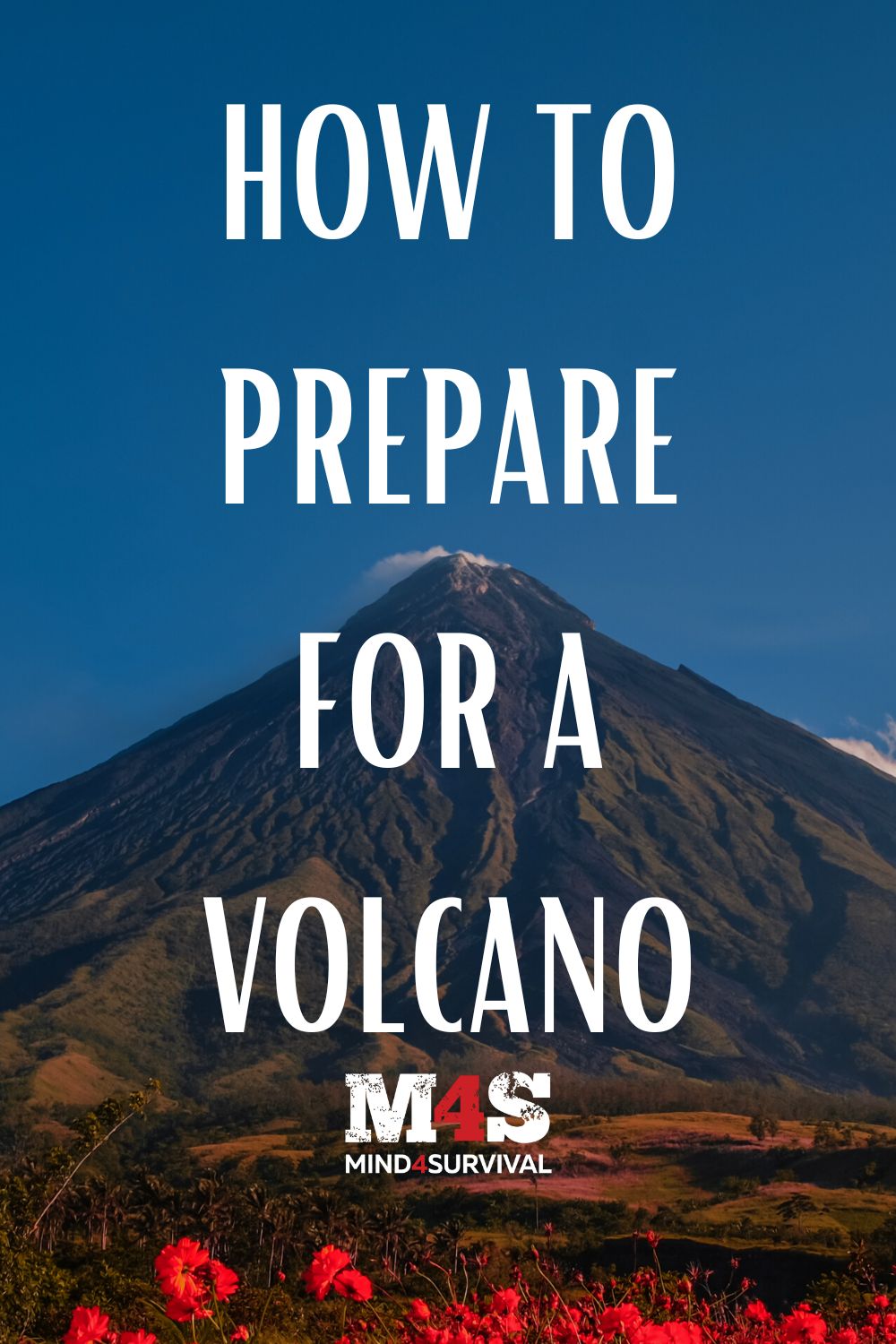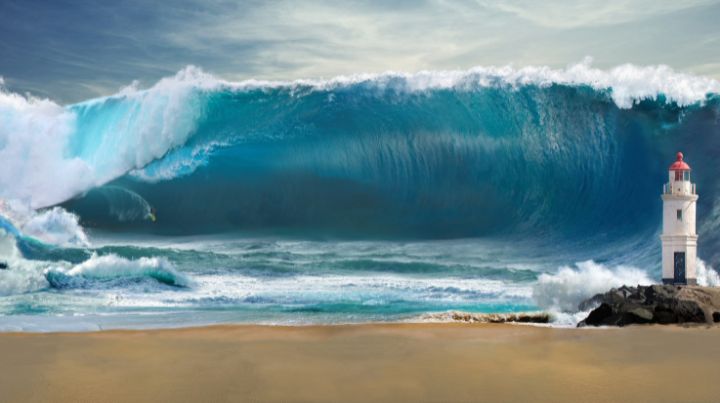Best Tips How to Survive a Volcanic Eruption

The Earth is constantly roaring and rumbling. Every once in a while, it explodes, too. Two of history’s most terrifying volcanic eruptions took place in the month of August, making it a perfect time to learn more about how to survive a volcanic eruption.
Though not the most powerful in history (that record belongs to Indonesia’s Tambora in 1815), the explosions of Krakatoa in 1883 and Mount Vesuvius in 79 A.D. are arguably the most well known. The former destroyed almost three-quarters of the Indonesian island and surrounding archipelago. The latter buried several towns in southern Italy.
Few natural events can rival volcanic eruptions for sheer magnitude, violence and intensity. The amount of energy released can be devastating on unimaginable levels and travel great distances, reaching populations other than the ones in its immediate surroundings.
Most Volcanoes Are Well Known and Mapped
An active volcano is one either erupting or likely to erupt in the future. Otherwise, it’s considered dormant. Aside from ocean floor volcanoes, about 1,350 potentially active volcanoes exist spread across the globe. Over 500 eruptions have happened in recordable history, 169 in the U.S. (most in the Alaskan region).
Modern technology and advancements in geology make it possible to closely monitor Earth’s crust activity (here’s a link to a website that reports volcanic activity in real-time). However, as with every other aspect of nature, a significant component of unpredictability is always present.
While technically possible to predict an eruption with reasonable precision and advance notice, forecasting the exact extent and consequences of volcanic activity is currently impossible.
The Effects of Volcanic Eruptions Can Travel Long Distances
There are various ways an eruption can impact people. The most common and frequent are earthquakes, tsunamis, air and sound waves, volcanic winter, and other impacts on the climate. These can reach populations distant from an active volcano, one more reason to prepare if you live in such a place. Depending on the activity, even airliners must be rerouted for safety reasons, sometimes by thousands of miles.
More than 1,500 inhabitants of Pompeii and Herculaneum in ancient Rome died when Mount Vesuvius erupted. Both cities got buried under hot ash. They knew it was an active volcano. For some time before the disaster, signs indicated something big was about to happen. Another eruption seventeen years earlier had already brought great destruction and death count.
Yet, citizens kept watching in awe as the mountain exploded. It must have been an impressive spectacle for sure. The tragedy of Pompeii is just one classic example of a disastrous event resulting from denial and normalcy bias, or people failing to take action for safety and to try and stay alive when red lights and alarm bells are screaming everywhere. There are countless others.
How to Prepare for a Volcanic Eruption
As usual, knowledge, information, and awareness can be our best allies. Those already living in such regions should have an event guide to follow, a plan A in case something happens. Either way, the #1 rule of survival is “not being there,” so leaving in advance of a potentially deadly event, whatever the nature or scale, is the best strategy. If sirens and. mental alarms go off, take your family, gran your emergency bags, and leave.
Those in regions that could get affected indirectly by secondary effects should monitor the situation. Preppers tend not to trust the government or the press much. But history shows that it can be a good idea to pay attention to official bulletins and the news in this particular instance. For some reason, authorities don’t seem to play games when it comes to volcanoes. Of course, they still could miss something or get things wrong, so stay informed and use critical thinking.
Direct Effects
The official death toll of the Krakatoa eruption is 36,417 people. Some studies estimate a much larger number. Eruptions can expel thousands of tons of ash, pumice, rocks, magma, hot mud, gases, and other minerals and chemicals. This means there are many ways of dying when a volcano goes active.
The massive quantities of energy released during a volcanic explosion can travel hundreds or even thousands of miles, sometimes circling the globe as air and shock waves, earthquakes, and tsunamis. Knowing this is important because people and places can get impacted at different levels, even if distant from the active volcano. Let’s see more about them:
Air and Sound Waves
The third and largest blast of the Krakatoa is considered the loudest sound ever heard on Earth, estimated at a brain-melting 310dB. It generated a pressure wave that radiated from the island at 765mph, or faster than a jet. The explosion was heard more than 3,000 miles away in Australia. Sailors on ships stationed in the Sundra Strait (40 miles from Krakatoa) had their eardrums ruptured. That’s an extreme example taken from one of the largest eruptions in history, but it illustrates the colossal power of such events and how people can get physically affected even at far distances.
Vapor and Volcanic Matter
Volcanoes can send plumes, steam, and ash as high as 35 miles into the stratosphere. Eruptions can throw millions of tons of vapor and earth matter into the atmosphere, which can cause temporary changes in the weather. The explosion of Krakatoa caused a “volcanic winter,” canceling the El Niño phenomenon that year and causing record rainfall in Southern California.
Nowadays, these effects are measured precisely with the use of satellites. NASA scientists declared that the violent eruption of the Tonga-Hunga Ha’apai volcano on Jan. 15 injected an unprecedented amount of water vapor into the stratosphere,”… equivalent to around 10% of the amount of water vapor typically residing in the stratosphere — this event may not cool the surface, but rather it could potentially warm the surface due to the excess water vapor”. [SOURCE]
Tsunamis
These result from the release of enormous quantities of energy during and after an eruption. Tsunamis can travel hundreds or even thousands of miles and still cause damage to shoreline cities. In 2018, the Anak Krakatoa – Son of Krakatoa, the most dangerous “offspring” of the 1883 eruption – came alive again. The tsunami generated by the eruption killed over 370 people in Indonesia alone.
Secondary Earthquakes
These can be deadly by themselves and also cause tsunamis. Though not caused by a volcanic eruption, the worst nuclear disaster of recent history resulted from an earthquake-induced tsunami hitting the Fukushima plant in Japan in 2011. When volcanoes erupt, Earth’s crust gets destabilized and shifts. The energy involved in these events is astronomical orders of magnitude bigger than even the most powerful nuclear weapon ever created, Russia’s Tsar Bomba. Other shocks can happen in the area and nearby regions for days or weeks afterward.
Phreatic Eruption or Explosion (aka Ultravolcanic Eruption)
When extremely hot magma flows over ground or surface water, it causes near-instantaneous evaporation resulting in explosions of steam, rock, and other earth matter, sometimes even hot mud. Though not as hot as magma, the mud can move and flow at faster speeds and thus be even more deadly and destructive. Of course, melting rock (magma or lava – the main difference is in chemical composition) is also very dangerous and practically impossible to be contained (except in Hollywood movies, that is).
In September 2021, the Cumbre Vieja (“Old Peak” in Spanish) in the Canary Islands went active, expelling large quantities of lava that reached populated areas, destroying thousands of buildings, roads, infrastructure, and plantations. Authorities and experts monitoring the eruption worried a big landslide could cause a tsunami in the Atlantic Ocean that could hit other places, which fortunately never happened as the Cumbre Vieja went dormant again in mid-December of the same year.
The Bottom Line About How to Survive a Volcanic Eruption
Volcanoes are active all over the globe, all the time. Eruptions are one of the most powerful events in nature, causing all sorts of effects and affecting populations in the surrounding regions but also potentially reaching distant places. While history, science, and technology combine to help monitor volcanic activity around the globe and make it possible to predict eruptions with reasonable accuracy, it’s still a natural event. As such, the true extent of consequences can be hard to forecast. Therefore, preparing is crucial if you live near or within range of an active volcano.
Additional Resources:
- SHTF Plan: 4 Step Guide for Surviving Any Disaster
- Disaster Situations Aren’t Always Isolated Events
- Disaster Medicine Basics
- Lessons From the Scofield Mine Disaster

Don't Miss Out!
Join the thousands of people who rely on Mind4Survival preparedness advice by subscribing to our FREE newsletter.
- Practical preparedness information
- Zero Spam
- < 0.25% of people unsubscribe




Join Mind4Survival!
Stay informed by joining the Mind4Survival! 100% Secure! 0% Spam!
Follow Us!
Affiliate Disclosure
Mind4Survival is a free, reader-supported information resource. If you make a purchase through our link, we may, at no cost to you, receive an affiliate commission.



